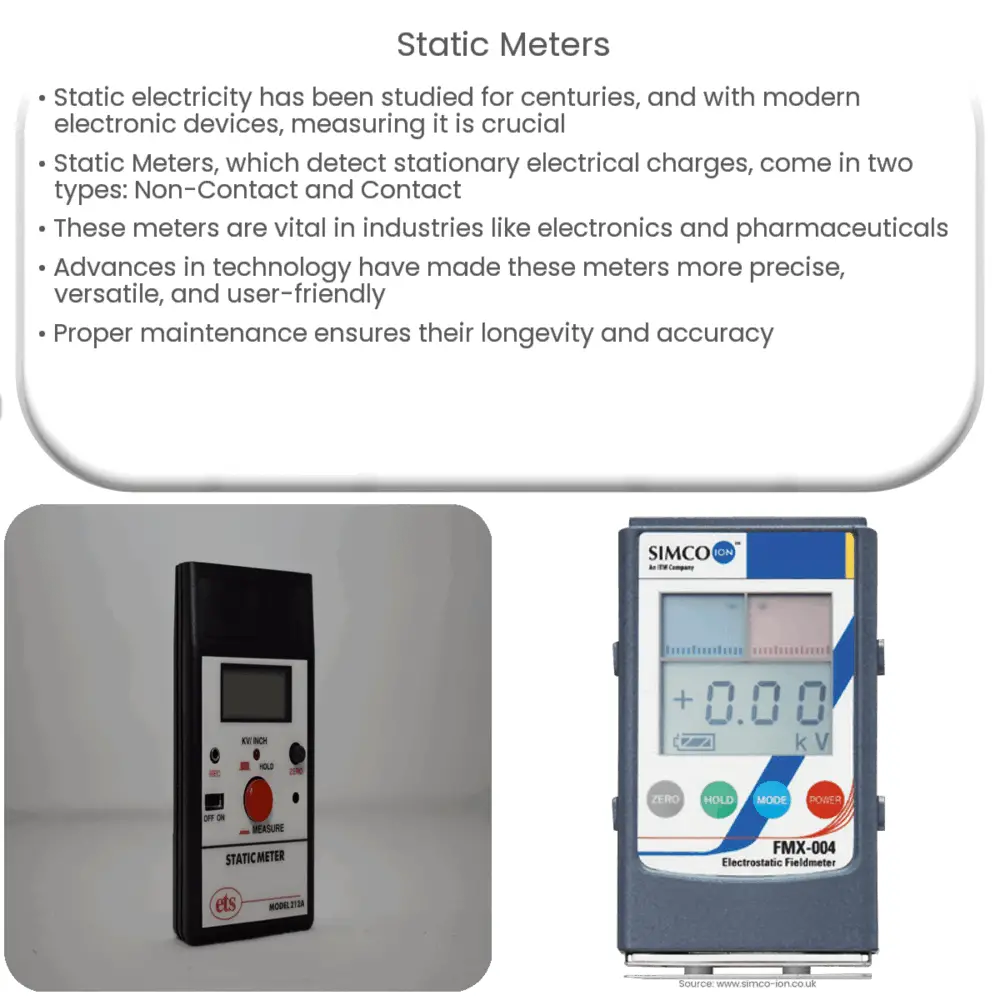Explore the world of static meters, their types, working principles, key features, and applications in various industries.

Introduction to Static Meters
Static electricity is a physical phenomenon that has been part of human knowledge for centuries, yet it remains a field of continuous research and development. With the advent of complex electronic devices and machinery, understanding and measuring static electricity has become crucial. The tools used to measure static electricity are known as Static Meters. These are specialized devices that offer precise readings of static charges in various environments.
Working Principle of Static Meters
At the core, static meters operate based on the principle of induction or electrostatic attraction. They are designed to detect and measure the electrical charges that are stationary or ‘static’, thus the name ‘static meter’. These devices have a sensing element or probe which is directed towards the surface or object whose static charge needs to be measured.
Types of Static Meters
- Non-Contact Static Meters: These meters measure the static charge from a distance, without needing to touch the object or surface. They are commonly used in environments where direct contact can lead to electrical discharge or damage to the object.
- Contact Static Meters: These meters require direct contact with the surface or object to measure the static charge. They are typically used in settings where a more precise measurement is required, and the object can tolerate direct contact.
Applications of Static Meters
The significance of static meters extends across numerous industries, from electronics to pharmaceuticals, printing, and more. In the semiconductor industry, for instance, they help in identifying and managing static charge to prevent damage to sensitive components. In the pharmaceutical industry, these meters are used to control static electricity that can impact the quality and efficacy of medications.
Important Features in a Static Meter
When selecting a static meter, several features are considered critical. They include:
- Accuracy: The device should provide accurate and reliable readings of static charge.
- Range: The meter should have a wide range to measure both very high and very low static charges.
- Resolution: The meter should offer a high resolution to detect even slight changes in static charge.
Durability and User-Friendliness
Other important aspects to consider in a static meter are durability and user-friendliness. The static meter should be robust enough to withstand different working conditions, from high-temperature environments to those with high levels of humidity. The design and interface should also be intuitive, enabling users to operate the device easily and efficiently, whether they’re professionals or novices.
Advancements in Static Meter Technology
As with many areas of technology, static meter devices have also seen significant advancements over the years. Today, advanced static meters often incorporate digital displays, providing users with a more precise and easy-to-understand reading. Some static meters now come with connectivity options, such as USB or Bluetooth, allowing for the transfer of data to a computer for further analysis. This technological progression has made static meters more versatile and useful across a range of industries.
Maintenance of Static Meters
Proper maintenance of a static meter is essential to ensure its longevity and maintain its accuracy. This can involve regular calibration to confirm the device’s reading accuracy, cleaning the probe to prevent buildup that could skew readings, and performing regular checks on the device’s health. Always refer to the manufacturer’s instructions for specific maintenance guidelines for your specific static meter model.
Conclusion
In conclusion, static meters are indispensable tools in numerous industries where static electricity plays a critical role. By understanding the different types of static meters, their operation, and the features to look out for, one can make an informed decision when choosing a meter for specific applications. The advancements in static meter technology continue to improve their accuracy, versatility, and convenience, making them an essential tool for professionals working in a variety of fields.
Despite their complex operation, static meters are designed to be user-friendly, and with proper maintenance, can provide accurate readings for many years. They epitomize how understanding and harnessing a fundamental natural phenomenon – static electricity – can drive innovation and efficiency across a myriad of industries.

